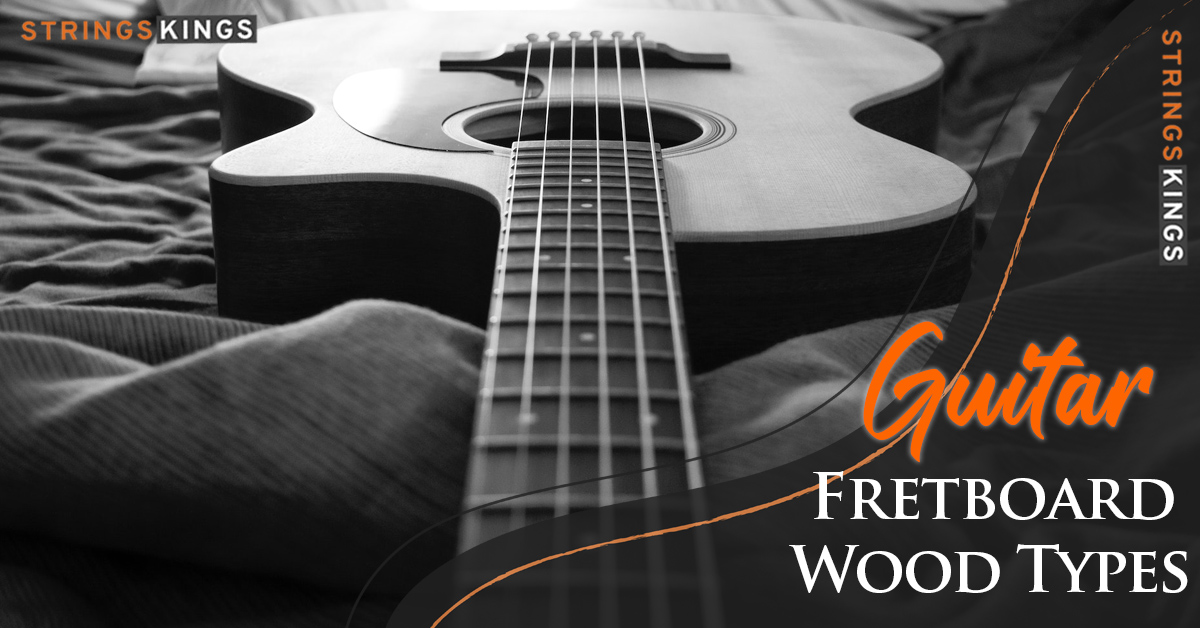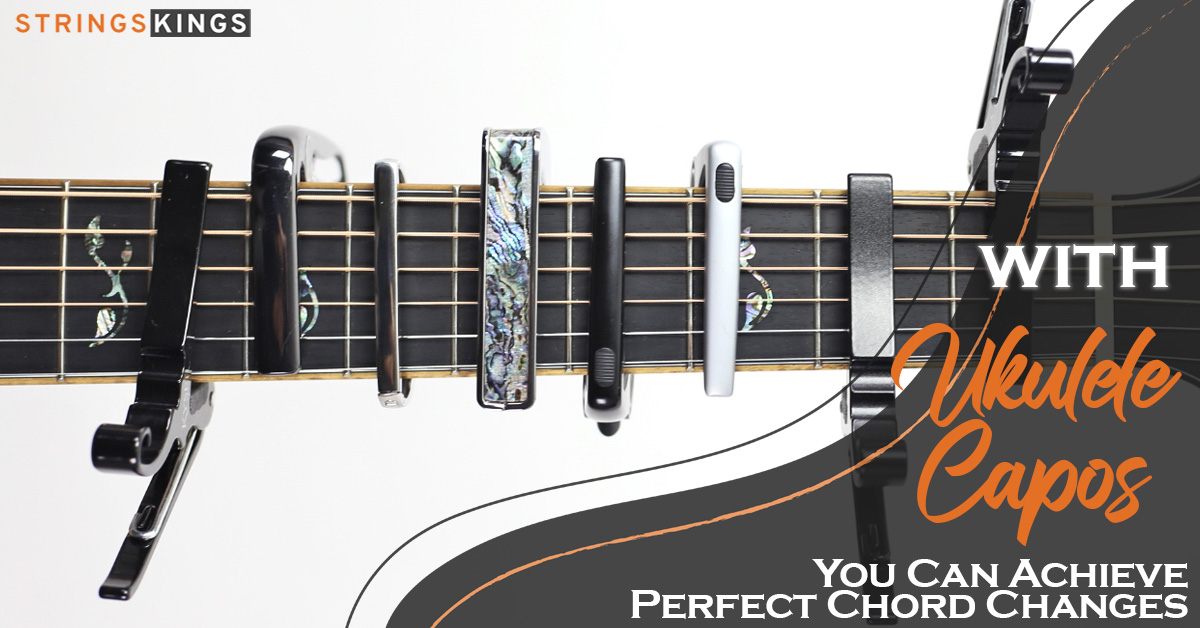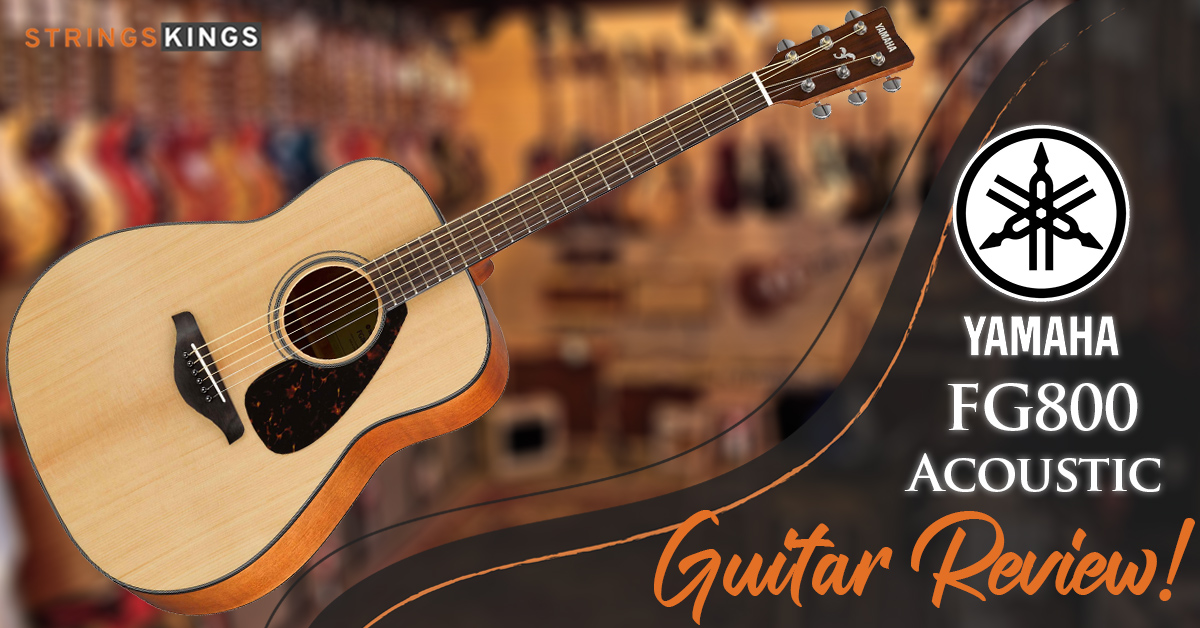Table of Contents
Learn More About Guitar Bridge Types
A guitar bridge plays many roles in the operation of your instrument. String alignment, intonation, and action are controlled by it. With a Tremolo Bridge, you can also add texture and expression to your playing.
You should understand what each of these bridges does, and why you would choose one over another as a guitarist.
What Is A Guitar Bridge?
In traditional stringed instruments, the sound was produced in two steps. Usually, energy is applied to the strings by picking, plucking, or bowing them. It requires a conductor to take a small vibration and make it audible so it can be transferred to the soundboard.

The humble bridge plays a crucial role here. The bridge serves as a conduit from the strings to the soundboard, allowing the strings to vibrate freely while still carrying vibrations to the soundboard.
While pickups are the primary way to capture sound on an electric guitar, the bridge is still an important part of the instrument. The type of bridge you choose will affect how your strings vibrate, and each type has its own advantages and disadvantages.
Fixed and Tremolo Bridges
Many different types of guitar bridges exist, but they are generally divided into Fixed Bridges and Tremolo Bridges.
Fixed Bridges
The term Fixed Bridge refers to a bridge that is fixed to the body and does not move. There are three typical types of bridges: Hard Tail Bridges, Tune-O-Matic Bridges, and Wraparound Bridges. These bridges are each designed differently.
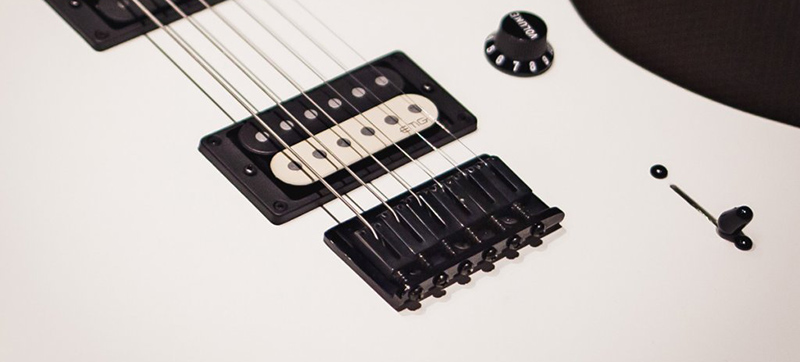
Due to the solid contact between the guitar body and strings, a fixed bridge provides better tuning stability. It also affects the sound of the guitar, since it allows vibrations to be transferred more effectively to the body. It is for this reason that many hollow and semi-hollow electric guitars have Tune-O-Matic or Wraparound bridges.
Tremolo Bridges
It is called the Tremolo Bridge because it allows the player to create the Tremolo effect. In spite of the fact that Tremolo is the most popular term for these types of bridges, the effect you are applying is actually vibrato.
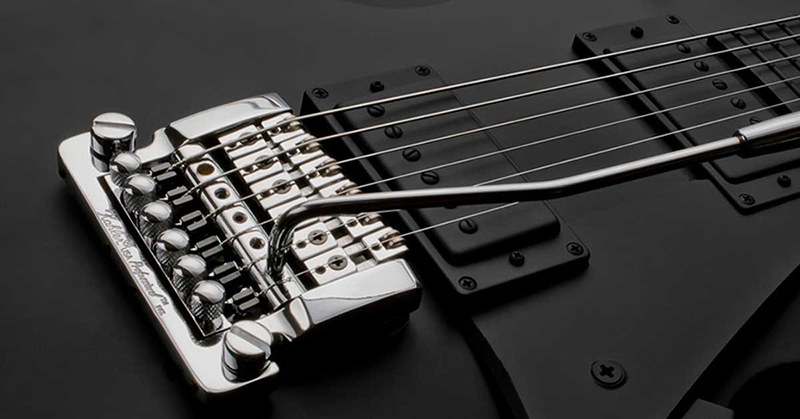
The term “Tremolo” refers to a steady increase and decrease in volume (think of the intro to the song “Gimme Shelter”), whereas the term “Vibrato” refers to a change in pitch.
In Tremolo Bridges, you can choose from Synchronized Tremolos (aka ‘Floating Tremolos’), Locking Tremolos, Bigsby Vibratos, and the less well-known Duesenberg and Stetsbar Tremolos.
The majority of Tremolo bridges are suspended, reducing the amount of contact with the guitar body. Reduced contact with the guitar body affects the guitar’s sound and resonance. On an electric guitar, however, these effects have a minimal impact on your overall tone.
Guitars with floating bridges have springs built into the back. These springs allow them to return to their original position when tension is applied, allowing you to produce unique guitar sounds that aren’t possible with fixed bridges.
Different Types Of Guitar Bridges
Guitar bridges come in six different varieties. Here you can see some of the most popular types from both, Tremolo and Fixed bridges. In addition, we have listed the advantages and disadvantages of each, so you can decide which one is the best fit for you.
- Floyde Rose [Tremolo Floating].
- Synchronized [Tremolo Floating].
- Bigsby [Tremolo Roller].
- Wrap-Around [Fixed].
- Hardtail [Fixed].
- Tune-O-Matic [Fixed].
Floyd Rose Tremolo
Floyd Rose Tremolo Bridges (also known as Locking Tremolos) are similar to Synchronised Tremolos, but they include a locking nut. Floyd Rose or Locking Tremolo guitars allow you to manipulate the string length by keeping them in place at the nut, creating some wild guitar sounds. Hard rock and metal guitarists use them to enhance guitar solos, which makes them a favorite.
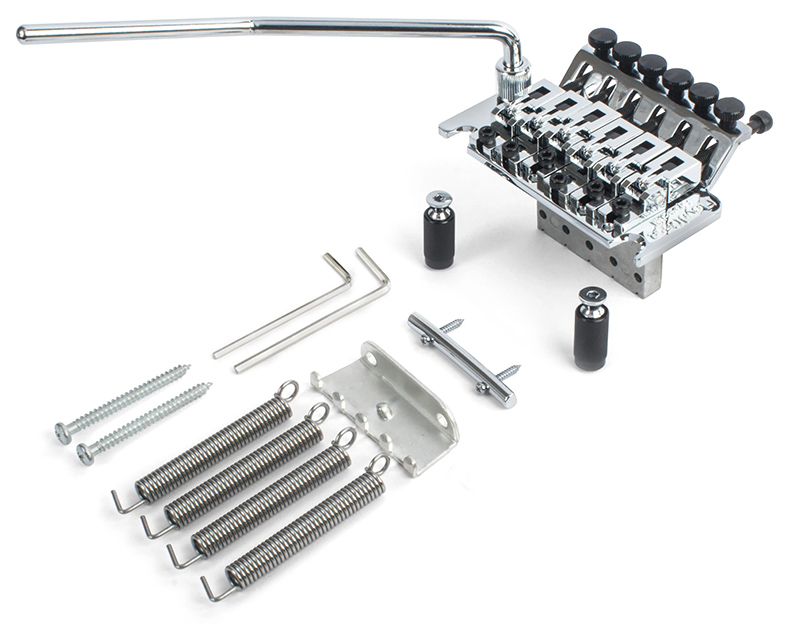
In the right hands, the Floyd Rose or Locking Trem can be an incredibly useful tool, but it’s not for beginners. Before you can set up the system properly, you’ll need to have some knowledge of it, and even changing strings can be challenging.
Synchronized Tremolo
The synchronized tremolo bridge is an extremely popular guitar bridge (also known as the floating tremolo or vintage tremolo). The Synchronised Tremolo is typically found on Stratocasters and Strat-style guitars with an integrated bridge and tailpiece.

Compared to Bigsby-style Tremolos, this gives them a significant advantage. Tremolos are held in place by three or five springs at the back of the guitar, which create tension so they can return to the pitch.
Known for its sound versatility as well as its inherent adjustability, the Synchronised Tremolo is extremely popular. Set-up is easy with individually adjustable saddles for action and intonation.
The whammy bar and the ability to manipulate pitch make these a favorite of guitarists everywhere. When combined with locking tuners, Synchronised Tremolos allow you to enhance your playing while providing reliable tuning stability.
Bigsby Vibrato
Bigsby vibratos were first used on hollow and semi-hollow body guitars in the late 1940s. With a spring-loaded tremolo arm and two bars, the Bigsby creates a much more subtle effect than the Floyd Rose Tremolo. The first bar keeps the tension of the strings, but the second, called the ‘roller bar,’ moves with them and anchors the strings.
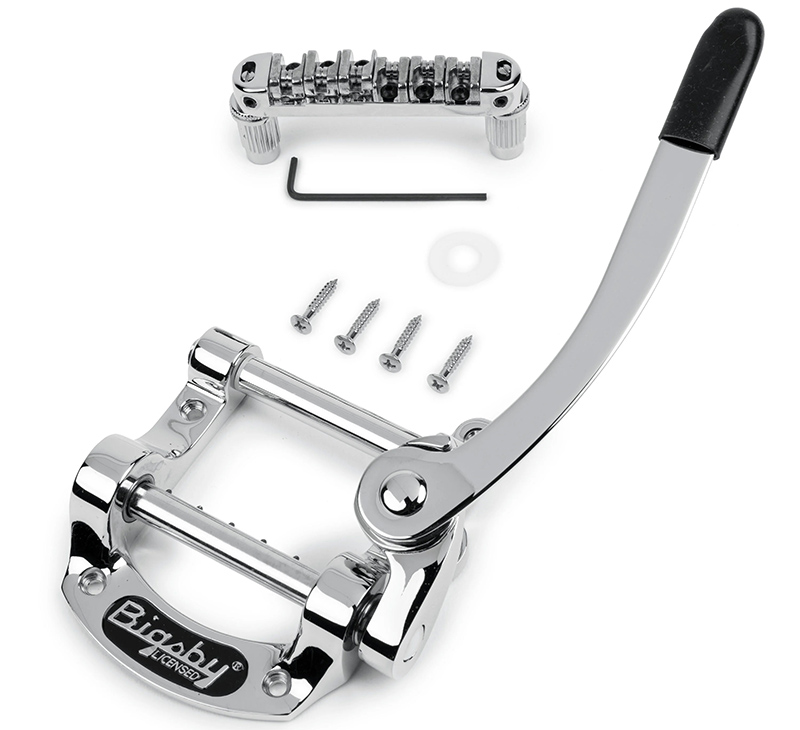
Some people dislike the Bigsby due to its bulky design, but for many, it lends a classic aesthetic to guitars. Many players prefer the subtle tonal changes delivered by this system over the dramatic effects provided by a synchronized tremolo or Floyd Rose system.
A drawback of a Bigsby Vibrato is that tuning stability is not always optimal, although this can be solved with locking tuners. For beginners, changing strings with locking tuners can be challenging.
Wrap Around Bridge
Most electric guitar brands have used the Wrap-Around Bridge at some point in their history. It was one of the first types of bridge used on electric guitars. Although some modern designs have corrected this, the original designs did not allow for intonation adjustments.

It’s probably the easiest to restring an electric guitar with a wraparound bridge, making it great for beginners just getting started. Despite their excellent tuning stability and ease of use, their lack of fine-tuning capability can sometimes be a hindrance.
Hard Tail Bridge
Despite looking similar to a Tremolo bridge, the Hard Tail Bridge is fixed to the guitar body and does not move. These bridge plates are usually found on Telecasters, where the unique bridge plate design contributes to the Telecaster twang, but they are also found on quite a few Stratocaster models, without the bridge plate.

As with Wrap Around style bridges, Hard Tail bridges hold their tuning exceptionally well and are super easy to restring, making them perfect for beginner guitars. The bridge can also be switched to an upgraded version simply by unscrewing the old one and replacing it with the new one.
Tune-O-Matic Bridge
In 1953, Gibson introduced the Tune-o-Matic Bridge on the Gibson Super 400, followed by the Les Paul Custom the following year. It eventually replaced the Wrap-Around design on all Gibson guitars. It became Gibson’s standard mainly due to the string break angle created by the Stop Bar, which improved tuning stability and sustain.

Typically, Tune-o-Matic bridges are mounted to the guitar body using two Bridge Posts, which allow for easy adjustment of string action. With the Tune-o-Matic bridge, you can also adjust the string saddles individually, ensuring each string is in tune across its length.
Unlike a Hard Tail or other Tremolo Bridges, Tune-o-Matic Bridges do not allow you to adjust string height individually. Instead, you can adjust either the bass or tremolo side.
In this video, you can see and learn more about different types of Guitar bridges!
Wrapping Up
A couple of less popular bridge designs (Stetsbar and Duesenberg) are not mentioned here, but for the most part, these are the types of guitar bridges you’re most likely to find on your instrument.
Due to its integral nature, a bridge upgrade on a beginner or intermediate guitar can have a significant impact on its playability. When it comes to choosing a new bridge or replacing your existing one, it really depends on what you’re looking for.
Hopefully, this article was helpful for those that are looking for information about guitar bridge types, their advantages, and their disadvantages.
Remember that choosing the right guitar bridge for your style and instrument is just as important as picking any other part.
Happy Strumming!

